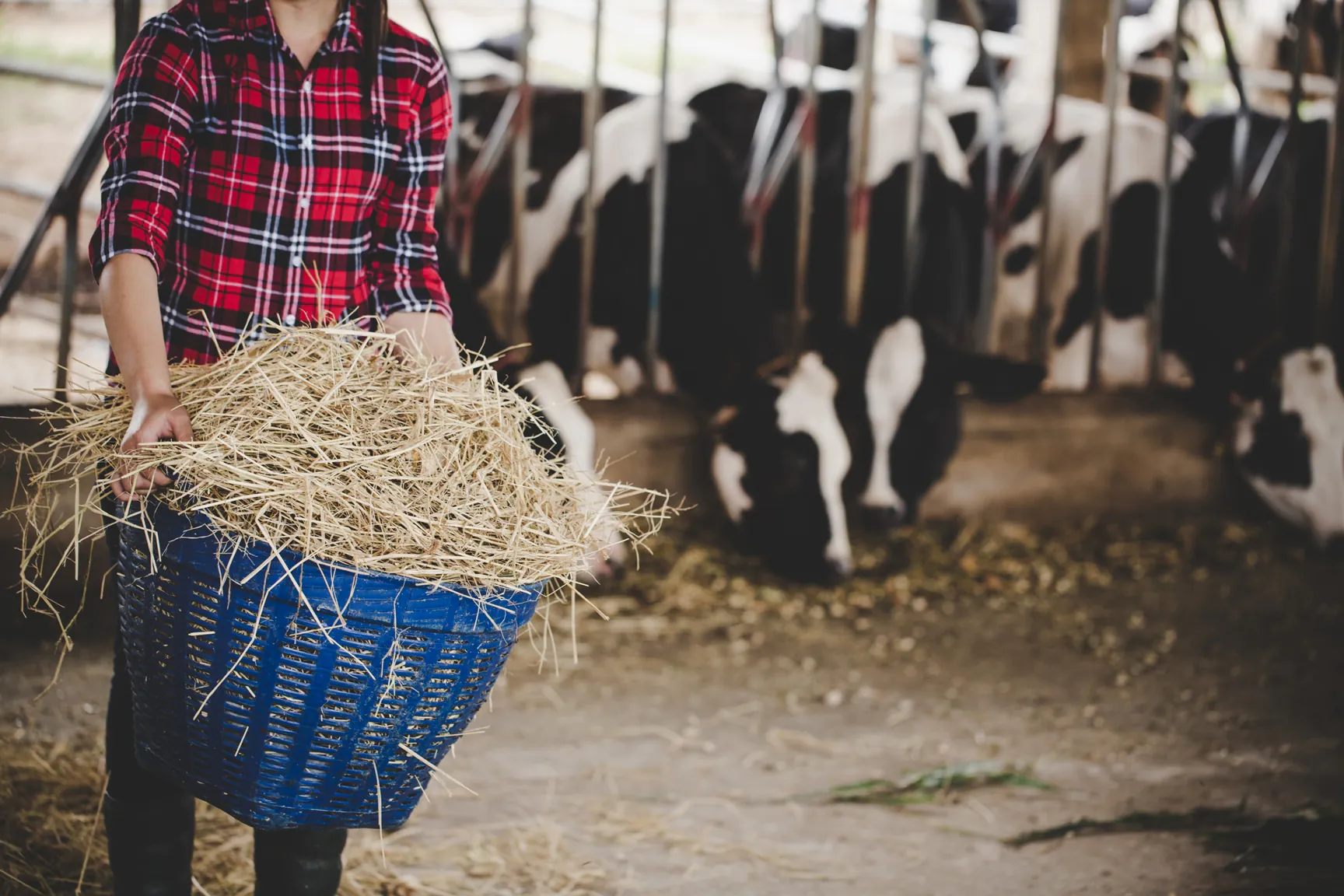Top Challenges of Livestock Farming
Livestock farming is an essential pillar of the global food production system. From providing people with various nourishing types of meat and dairy products to contributing fibers and wool for the textile industry, livestock farming is undoubtedly one of the key roles in sustaining human life. However, despite such a huge contribution, there are numerous challenges of livestock farming as well. Livestock farmers face difficulties every day as they try to raise healthy animals and provide high-quality products for society. They need to be prepared and equipped to face these issues.
What is livestock farming?
Livestock farming refers to the practice of raising livestock and farm animals for food, fiber, and other by-products, either for leisure or for livelihood purposes. Livestock raising includes domesticated animals such as cattle, sheep, goats, pigs, poultry (chickens, ducks, turkeys), and others.
Livestock farming is a crucial component of agriculture and plays a significant role in societies. This is because it provides various resources for human consumption, contributes to nutritional security, helps improve economic stability, and more.
It’s also important to understand that livestock farming is broad and encompasses numerous activities and responsibilities. Here are some key aspects of livestock farming:
- Food Production: One of the primary purposes of livestock farming is to produce food for human consumption. Animals raised for meat (beef, pork, lamb, and chicken) provide a major source of protein in many diets around the world.
- Dairy Farming: Some livestock, such as cows and goats, are raised for milk and dairy products. Dairy farming involves the production of milk, cheese, yogurt, and other dairy items.
- Egg Production: Poultry farming focuses on raising chickens, ducks, or other birds for egg production. Eggs are a versatile and nutritious food source for people.
- Fiber Production: Certain animals, like sheep and goats, are raised for their wool and hair. These are used to produce textiles and other fiber-based products.
- Work and Transport: In some cultures and regions, animals like oxen are still used for plowing fields and as a means of transportation.
- Manure for Agriculture: Livestock farming also provides manure, which is a valuable organic fertilizer for crops. It helps improve soil fertility and structure on the farm.
- Companionship and Recreation: Some animals, such as horses, are kept for companionship, recreational activities, or as working animals in industries like horse racing.
Livestock farming is vast, and every farm varies depending on cultural, economic, and environmental factors. As the world and industry grow, livestock farming must also change and cater to the new needs and challenges that will arise.
What are the top challenges of livestock farming?
As a broad practice, livestock farming faces various challenges. With modernization and various factors to consider (such as the location, the scale of operation, and the livestock animals involved), it’s no surprise that these challenges will also vary and change over time.
Here are some of the significant challenges livestock farmers face:
Disease Control
Livestock animals are susceptible to various livestock diseases. Controlling the spread of infectious diseases is a constant challenge for farmers and ranchers. Outbreaks can lead to significant economic losses and may require the culling of infected animals. Livestock farmers always have to be on the lookout for the start of these diseases.
Feed Availability and Cost
The cost and availability of feed, particularly during periods of drought or other adverse weather conditions, can be a major challenge in livestock farming. Rising feed prices can impact the profitability of livestock farming. This might force livestock farmers to cut other supplies to compensate for the rising feed prices, sell some of the animals to reduce feed costs, and more.
Water Scarcity
Adequate and clean water is essential for livestock health and productivity. This means that water scarcity can affect the well-being of animals. Dry seasons and droughts will make water availability more challenging. Mismanagement will also contribute to water scarcity. Farmers will need to educate themselves on water harvesting techniques, standing pools, and more.
Environmental Impact
Livestock farming can contribute to multiple environmental issues. In fact, raising livestock for human consumption is known to generate nearly 15% of total global greenhouse gas emissions. It also uses nearly 70% of agricultural land, which can lead to issues like deforestation, soil erosion, biodiversity loss, and water pollution. Balancing the need for livestock farming and food production with environmental sustainability will always be a significant challenge for livestock farmers.
Market Fluctuations
Livestock farmers are often vulnerable to fluctuations in market prices for meat, milk, and other products. Economic factors, consumer preferences, and global market dynamics can impact the profitability of livestock operations. In this case, livestock farmers will need to find ways to earn a decent profit while still catering to various factors and consumer preferences.
Regulatory Compliance
Regulatory compliance, of course, is also another one of the top challenges of livestock farming. Livestock farmers must comply with various regulations related to animal welfare, food safety, and environmental protection. Adhering to these regulations can be demanding and may require significant investments in infrastructure and management practices.
Breeding and Genetic Improvement
Breeding and maintaining healthy and productive livestock require ongoing efforts in genetic improvement. This involves selecting and breeding animals with desirable traits, such as disease resistance, growth rate, and reproductive performance. Some livestock farmers might need to incorporate digital livestock farming technology to optimize breeding programs and improve livestock genetics.
Land Use Competition
As the global population increases and demands for agricultural land rise, competition for land use between livestock farming and other forms of agriculture can be harsh. And once urban development comes into the mix, the competition can also become even more intense. Limited land use can lead to a lack of animal housing and habitats, a lack of natural resources, water scarcity, animal stress, and more. Livestock farmers need to be ready for these and learn how to effectively manage limited land.
Climate Change
Drastic climate change is one of the top challenges of livestock farming as well. Climate change can affect livestock farming through changes in temperature, precipitation patterns, and the frequency of extreme weather events. Adapting to these changes and mitigating their impact is a growing concern for the industry.
Extreme weather changes and intense heat can cause stress among the animals, delay the production of food, dairy, or fiber, and can even threaten their lives. All of these can be big problems and might impact profitability for livestock farmers.
Adoption of Technology and Modern Solutions
While technological advancements can enhance efficiency and productivity in livestock farming, some farmers may face challenges in adopting and affording these new technologies. These modern solutions might get too complicated, too expensive, and too much of a risk for the livestock farm. Farmers and ranchers need to identify the specific problems they have on their farms and choose the best solutions they need to manage and grow their livestock.
Conclusion
Addressing these challenges often requires a combination of technological innovation, sustainable farming practices, efficient animal agriculture management, effective government policies, and support systems for farmers. The livestock farming industry will need all the help it can get to combat these specific obstacles.
This is also why SOLUM Group is developing innovative technology devices and offering solutions for livestock farming. The SOLUM Livestock Healthcare Solution is here to aid livestock farmers and ranchers in taking care of and managing their livestock with a more precise and modern approach. The right digital solutions will bring improved animal welfare, data, increased profitability, automation, better sustainability, and more.
To know more about the SOLUM Livestock Healthcare Solution, talk to experts from SOLUM now and find out how we can help solve the challenges of livestock farming.
SOLUM Marketing
Category
Keywords











